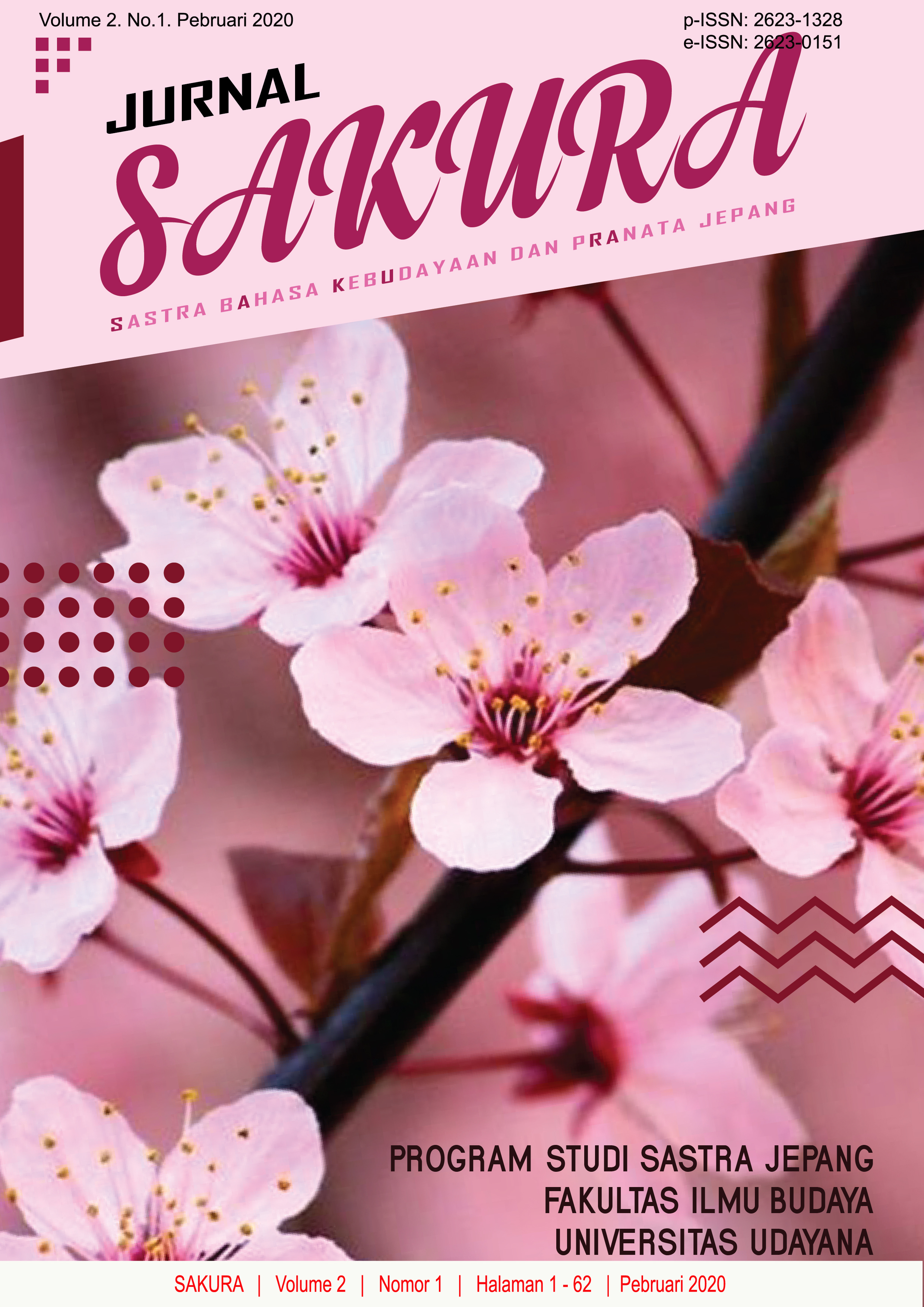Ujaran Penolakan dalam Bahasa Jepang dan Bahasa Bali
Abstract
The study, entitled "Refusal in Japanese and Balinese" aims to find out the refusal strategies in Japanese and Balinese contained in Japanese novels Narataaju and Balinese novels Sentana.The theory used in this study is the theory of Refusal Strategy according to Beebe et al. (1990) and Theory of Determination of Politeness Factors according to Mizutani and Mizutani (1987). This research uses descriptive analysis method in presenting data.The analysis shows that in Narataaju's novel there are three strategies of refusal. Three data with direct refusal strategy, five data with indirect refusal strategy, and two data with mixed refusal strategy. Factors influencing refusal in Japanese are social relations and intimacy. There are six forms of rejection strategies in Japanese. In the Balinese novel Sentana there are also three strategies of refusal. Two data with direct refusal strategy, four data with indirect refusal strategy and two data with mixed refusal strategy. Factors influencing refusal in Balinese are situation, social status, and age. From the results of the study found two similarities and one difference in the refusal in Japanese and Balinese.
Keyword: refusal, strategy, factor
Downloads
References
Beebe, Leslie M. Takahashi, Tomoko. Weltz, Robin Uliss. 1990. “Pragmatic Transfer in ESL Refusal”. Developing Communicative Competence in A Second Language. Nomor 4, hlm. 55-73.
Candrawati, Ni Luh Komang. 2005. Kamus Bali – Indonesia. Denpasar: Balai Bahasa Denpasar.
Chaer, Adbul dan Agustina, Leonie. Sosiolinguistik: Perkenalan Awal. 2010. Jakarta: Rineka Cipta.
Dardjowidjojo, Soenjono. 2005. Psikolinguistik Pengantar Pemahaman Bahasa Manusia. Jakarta: Yayasan Obor Indonesia.
Djajasudarma, T. Fatimah. 2006. Metode Linguistik. Bandung: PT Refika Aditama
Juliantara, I Ketut Putra. 2009. Perkawinan Gelajang Bareng/Negen pada Masyarakat Bali dalam Perspektif Hukum Adat Bali (Studi Kasus di Kota Singaraja).https://www.kompasiana.com/ikpj/54ff4670a333112b4a50fc6e/perkawinan-gelahang-bareng-negen-pada-masyarakat-bali-dalam-perspektif-hukum-adat-bali-studi-kasus-di-kota-singaraja (Diunduh 8 Januari 2020).
Makino, Seiichi dan Tsutsui, Michio. 2001. A Dictionary of Intermediate Japanese Grammar. Jepang: The Japan Times, LTD.
Mizutani, Osamu dan Mizutani, Nobuko.1991. How to be Polite in Japanese. Tokyo: The Japan Times, LTD.
Rani, Abdul. Arifin, Bustanul. Martutik. 2006. Analisis Wacana Sebuah Kajian Bahasa dalam Pemakaian. Jawa Timur: Bayumedia Publishing.
Shimamoto, Rio. 2017. Narataaju. Tokyo: Kadokawa.
Sugianto, I Made. 2014. Sentana. Tabanan: Pustaka Ekspresi.













